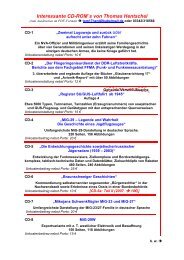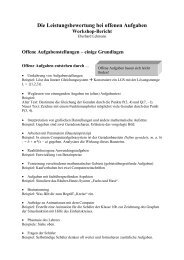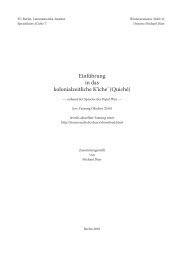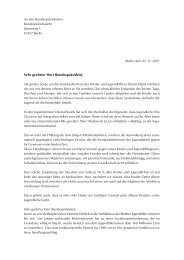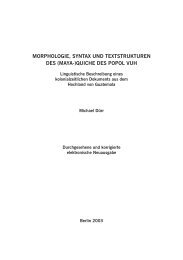SHADOW BOXING: INDONESIAN WRITERS ... - home . snafu . de
SHADOW BOXING: INDONESIAN WRITERS ... - home . snafu . de
SHADOW BOXING: INDONESIAN WRITERS ... - home . snafu . de
You also want an ePaper? Increase the reach of your titles
YUMPU automatically turns print PDFs into web optimized ePapers that Google loves.
176 Marshall Clark<br />
Ramayana stories and characters appeared. 71<br />
Examples of literary allusions to the<br />
Ramayana in 1997 and 1998 inclu<strong>de</strong> Ma<strong>de</strong> Adnanya Ole's short story, "Rahasia<br />
Gambuh" (The Secret of Gambuh), (1997) 72 ; Sriyono's short story, "Culik," (Kidnap)<br />
(1998) 73 ; Nano Riantiarno's play, Opera Hanoman (Hanoman's Opera), 1998 74 ; Soni<br />
Farid Maulana's poem, "Sepucuk Surat Sita Sebelum Labuh Pati," (A Letter From Sita<br />
Before Her Or<strong>de</strong>al) (1998) 75 ; Putu Wijaya's play, Ngeh (Got It), 1998 76 ; and Ki Sunu's<br />
series of Ramayana parodies appearing in the Sunday edition of the Surabaya-based<br />
newspaper, Jawa Pos, from September 1997 to January 1999. Several years after<br />
Suharto's resignation, Ramayana characters and motifs continue to proliferate in<br />
various literary forms, such as in Sunaryono Basuki Ks/s short story, "Gadis Kecil dan<br />
Mahkota Raja" (A Small Girl and the King's Crown), (1999) 77 ; the title poem of Asep<br />
S. Sambodja's collection, Menjelma Rahwana (Becoming Rahwana) (1999) 78 ; Linus<br />
Suryadi's unpublished novel Kίsah Όewi Anjani (The Tale of Dewi Anjani), which was<br />
read as a performance (accompanied by a gamelan orchestra) in Yogyakarta on<br />
February 10-11, 1999, just before Linus passed away; Bonari Nabonenar's "Tata"<br />
(2001) 79 and Seno Gumira Ajidarma's forthcoming novel based on the characters and<br />
tales of the Ramayana. 80<br />
One of the Ramayana-based short stories appearing in early 1998, "Kabesmen"<br />
(On Fire), 81 was written by Whani Darmawan, a young playwright and writer based in<br />
Yogyakarta. 82<br />
In this short story, when Hanoman is sent to Alengka to ascertain the<br />
welfare of Sinta, he discovers more than he bargained for: a naked Sinta sleeping with<br />
an equally naked Rahwana. Exhaustive in its unflattering portrayal of both Rahwana<br />
and Sinta, "Kabesmen" is a savage indictment of the hypocritical selfishness and<br />
corruption of Indonesia's privileged elite. Consi<strong>de</strong>r the following passage, <strong>de</strong>picting<br />
Sinta's rationale for what she is doing:<br />
71<br />
Of course, the following observations merely update G. J. Resink's visionary article, "From the Old<br />
Mahabaharata to the New Ramayana-Or<strong>de</strong>r," Bijdragen tot <strong>de</strong> Ίaal-, Land-en Volkenkun<strong>de</strong> 131,2/3 (1975):<br />
214-235.<br />
72<br />
Ma<strong>de</strong> Adnanya Ole, "Rahasia Gambuh/' Hoήson 32,10 (1997): 25-30.<br />
73<br />
Sriyono, "Culik/ 7 Kedaulatan Rakyat, May 3,1998.<br />
74<br />
Nano Riantiarno, "Opera Hanoman" (unpublished, 1998).<br />
75<br />
"Sepucuk Surat Sita Sebelum Labuh Pati" was first written in 1998 and published in Soni Farid<br />
Maulana, Kita Lahir Sebagai Dongengan (Magelang: IndonesiaTera, 2000), pp. 66-67. Note that labuh pati is<br />
a Javanese term for a scene in the Ramayana where after her rescue Sinta must prove her purity by<br />
ascending a burning pyre. Some versions say that she is cόr&umed by the fire, others that she emerges<br />
unharmed.<br />
76<br />
Putu Wijaya, "Ngeh" (unpublished, 1998).<br />
77<br />
Sunaryono Basuki Ks., "Gadis Kecil dan Mahkota Raja," Jawa Pos, May 21,1999.<br />
78<br />
Asep S. Sambodja, Menjelma Rahwana (Jakarta: Komunitas Bambu, 1999), p. 12.<br />
79<br />
Bonari Nabonenar, "Tata," Suara Mer<strong>de</strong>ka, January 8, 2001.<br />
80<br />
Interview with Seno Gumira Ajidarma, Jakarta, November 17, 2000.<br />
81<br />
Whani Darmawan, "Kabesmen," Basis 47,1-2 (January-February 1998): 82-87.<br />
82<br />
Un<strong>de</strong>r the guidance and encouragement of poet and playwright Emha Ainun Nadjib, Whani has been<br />
writing and performing in both Javanese and Indonesian for almost ten years. Born in Yogyakarta on May<br />
24,1966, Whani has experimented with wayang characters and plots on a number of occasions, most<br />
notably in his 1998 theatre production, Karno Tanding.


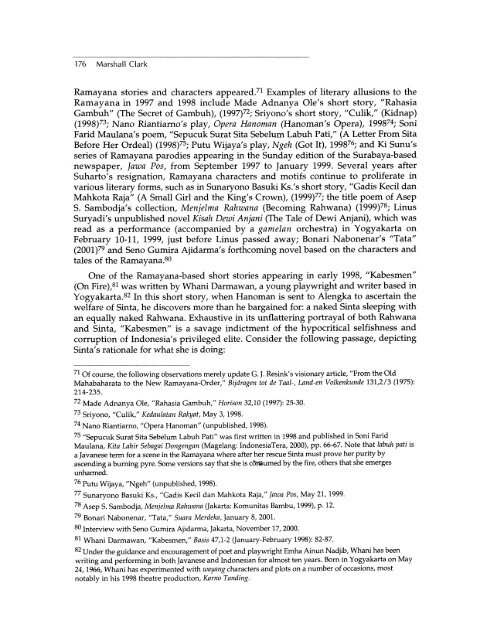
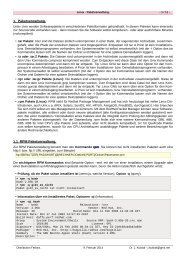
![Parameterdarstellungen [ x(t), y(t) ] Eberhard ... - home . snafu . de](https://img.yumpu.com/22517728/1/184x260/parameterdarstellungen-xt-yt-eberhard-home-snafu-de.jpg?quality=85)
